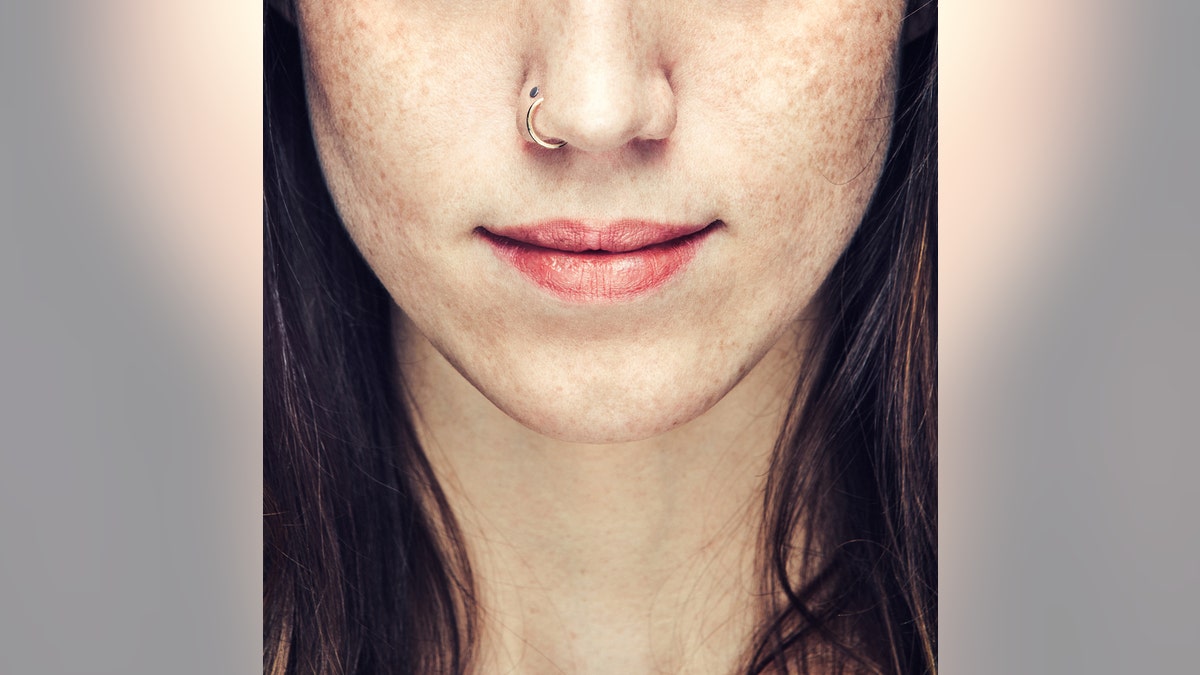
While serious complications are rare for most piercings, minor complications are pretty common. (iStock)
After earlobe piercings, nose piercings (septum and nostril) are the most popular type of facial piercing. While nose piercings are a relatively recent fashion phenomenon in the western world, they have a history that goes back thousands of years in the Middle East and at least a few centuries in southern Asia. In other cultures, nose piercings sometimes have cultural significance or are considered medicinal, but in the US they’re strictly ornamental for most people.
Nose piercings are done by inserting a needle through the skin or cartilage of the nose. Generally, the more blood flow there is in an area, the faster the piercing will heal. Since there’s not a lot of blood flow in the nose, which is mostly cartilage, nose piercings take longer to heal than ear, tongue, or lip piercings and, because of this, can be more prone to certain complications. While serious complications are rare for most piercings, minor complications are pretty common.
SPORTS DRINKS: WHAT'S THE REAL DEAL?
One of these typically minor but irritating complications is the development of keloids around the piercing. Keloids are an overgrowth of tissue at the site of an injury—basically a scar gone wrong. Sometimes keloids are the color of a person’s skin, but they’re often redder or darker. They’re most common over the back and shoulders and on earlobes, but they can occur at the site of any injury, including nose piercings.
There’s no way to prevent keloids, but some people are at a higher risk of developing them than others. People most at risk of developing a keloid after a piercing are those who have had keloids in the past, perhaps after other types of injury or other piercings. Keloids also seem to run in families, so you may be at higher risk if you have first-degree relatives who develop keloids. Other risk factors include having darker skin or type A blood, being under 30 or pregnant, and taking certain medications like anabolic steroids.
MUSIC: IT'S JUST WHAT THE DOCTOR ORDERED
Though keloids aren’t usually dangerous, they can affect sufferers’ confidence, especially when at the site of what was supposed to be a decorative piercing. In some cases they can also be itchy or painful, especially when swelling puts pressure on the affected area. Keloids around the site of a nose piercing can be particularly aggravating, and they can also be challenging to treat.
Sometimes the prominence of keloids can be reduced with home remedies. Hot salt water soaks and compresses may help reduce the appearance of keloids, and according to some advocates of homeopathic medicine, certain essential oils such as tea tree oil may help with the healing of scars and reduce the development of keloids. Whenever using a new essential oil, especially potent oils like tea tree, it’s important to test the oil on a small area of skin to make sure you aren’t sensitive to it. Many people find they have to dilute certain oils before applying them, and some with sensitive skin can’t use potent essential oils like tea tree at all.
NEUROLOGIST BACKS FAMILY'S FIGHT TO OVERTURN TEEN'S DEATH CERTIFICATE
Keloids can be treated by a dermatologist with cryotherapy (freezing a keloid from the inside out) or injections of corticosteroids or other medications, and in some cases, surgery may be recommended. Often, post-surgical treatments like pressure or silicone sheets or gels are used to keep the keloid from reforming or to keep a new keloid from developing.
If you experience a bump forming at the site of your piercing, it’s important to have it looked at by your doctor. Raised areas or inflammation can also be a sign of infection, which should be treated as early as possible. If your bump is the beginning of a keloid, home remedies may be more effective when they’re started early. Always carefully follow instructions for cleaning and caring for a new nose piercing, and see your doctor if you have any concerns.
This article first appeared on AskDrManny.com.




















